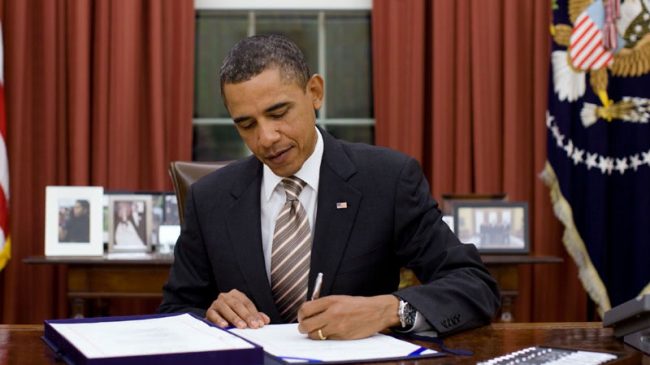The Obama administration released its new clean power plan today. The White House Fact Sheet claims: “The Clean Power Plan is a Landmark Action to Protect Public Health, Reduce Energy Bills for Households and Businesses, Create American Jobs, and Bring Clean Power to Communities across the Country.”
It would be more accurate to say that, “The Clean Power Plan is a centralized plan for electricity generation in the United States that is likely to harm public health, increase energy bills for households and businesses, destroy American jobs, and cause blackouts in communities across the country.”
Here are a some thoughts on the plan’s main claims:
1. The White House asserts, “The Clean Power Plan, and other policies put in place to drive a cleaner energy sector, will reduce premature deaths from power plant emissions by nearly 90 percent in 2030 compared to 2005 and decrease the pollutants that contribute to the soot and smog and can lead to more asthma attacks in kids by more than 70 percent.”
Indeed, in its regulatory impact assessment of the original Clean Power Plan rules, these public health benefits accounted for the majority of all benefits.
But these benefits do not come from reducing greenhouse gas emissions: they come from reducing other emissions, such as particulates. Yet these “public health benefits” would be achieved far more cost effectively by targeting harmful emissions directly. The Environmental Protection Agency (EPA) is already targeting such emissions. To claim such benefits for the Clean Power Plan is either double counting or misdirection, or both.
2. The White House asserts that the Clean Power Plan will, “Create tens of thousands of jobs.”
This may be true, but it will also likely destroy hundreds of thousands of jobs.
Given the enormous capital cost of implementing the plan, it seems highly likely that the net effect on jobs will be negative.
3. The EPA claims that these jobs will be created, “while ensuring grid reliability.”
This is surely a joke, since the Clean Power Plan envisages a significant increase in the proportion of electricity supplied by “renewable” power, much of which will come from intermittent sources such as solar and wind, which as the North American Electricity Reliability Corporation notes, tend to reduce grid reliability. To compensate, grid operators will be forced to spend billions of dollars on new technologies that enable them to balance power generation with demand.
4. The White House asserts that the final rule will, “Drive more aggressive investment in clean energy technologies than the proposed rule, resulting in 30 percent more renewable energy generation in 2030 and continuing to lower the costs of renewable energy.”
The rule does indeed require more electricity generation from “renewable” sources – from about 13 percent today to 28 percent by 2030. That will likely drive innovation, lowering costs of such technologies over time. But this will come at the cost of investments in other forms of innovation that would likely have greater benefits to society. The history of attempts to plan the direction of innovation is replete with white elephants. There is no good reason to think that this time is any different.
While the effectiveness of different sources of renewable generation varies according to climate and geography, we estimate that the maximum that could be produced using the current generation of intermittent technologies (that is, technologies such as wind and solar that are not capable of producing continuous power) is about 10 percent. Currently, solar and wind account for about 5 percent of electricity generation. Taking this to 20 percent or above will require heroic feats of engineering that may simply be impossible – and certainly will be enormously expensive. It is highly likely, therefore, that the Clean Power Plan will result in a substantial increase in the number of brown- and blackouts.
5. The White House claims that the plan will, “Save the average American family nearly $85 on their annual energy bill in 2030, reducing enough energy to power 30 million homes, and save consumers a total of $155 billion from 2020-2030.”
This assertion is based on the assumption that consumers will install energy saving devices because of the rule. In reality, the rule will almost certainly increase the cost of energy considerably over the next 15years, and beyond, as a result of the massive increase in investment in costly “renewable” generation that is required by the rule. While this will likely encourage consumers to be more frugal in their use of energy, it is entirely disingenuous to claim that this will “save” them any money: consumers will almost certainly spend more in total on energy and energy saving devices than without the rule.
6. The White House claims that the rule will, “Give a head start to wind and solar deployment and prioritize the deployment of energy efficiency improvements in low-income communities that need it most early in the program through a Clean Energy Incentive Program.”
While it is no doubt true that people living in low-income communities would benefit from energy efficiency improvements, it is far from clear that a federal rule is the best way to stimulate such investments. Meanwhile, increasing the proportion of energy generated by wind and solar power is likely to be highly regressive – harming the poor more than others.
Poorer consumers spend a higher proportion of their income of energy, so any policy that increases the cost of energy will disproportionately affect such poorer consumers, who will spend more on energy and have less available for other items. In other words, it will make poor people poorer. Since poverty is associated with health, the Clean Power Plan will almost certainly adversely affect the health of those who are already poor.
7. Finally, the White House claims that the rule will, “Continue American leadership on climate change by keeping us on track to meet the economywide emissions targets we have set, including the goal of reducing emissions to 17 percent below 2005 levels by 2020 and to 26-28 percent below 2005 levels by 2025.”
This is perhaps the most bizarre claim of all. First, it is by no means clear that the targets set for reducing emissions would pass an impartial cost-benefit test. The Obama administration’s current estimate of the “social cost of carbon,” which is used by the EPA to justify these cuts, is almost certainly higher than is justified by an impartial assessment of the costs and benefits of emissions of carbon dioxide, as we show in a paper to be released later this week.
Second, carbon dioxide emissions have been falling in the U.S. largely as a result of an autonomous switch from burning coal to burning natural gas, yet instead of assuming that this trend will continue, the revised Clean Power Plan rule requires states to focus on increasing the amount of power that will be generated by “renewable” and nuclear power. This is simply illogical.
Julian Morris is vice president of research at Reason Foundation.

